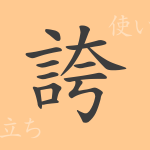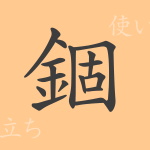The kanji deeply rooted in Japanese culture carry history and meaning within each stroke. The character “鼓”(つづみ, こ) is symbolic not only in music but also in its power to move people’s hearts. In this article, we delve into the origins and examples of usage, unraveling the charm of “鼓”(つづみ, こ) as a common kanji in Japanese.
Origin of 鼓 (Etymology)
The kanji “鼓”(つづみ, こ) originated in ancient China as a word meaning a percussion instrument. It has its roots in pictographs, depicting the act of beating a drum with both hands. Over time, this character came to represent not only the act of making music but also the idea of encouraging or invigorating something or someone.
Meaning and Usage of 鼓
The primary meanings of “鼓”(つづみ, こ) are “to beat a drum” and “to inspire or rouse the heart.” Expanding on this, it is used in expressions such as “鼓舞”(こぶ) meaning to uplift someone’s spirit, and “鼓動”(こどう) referring to the beating of the heart. These uses enrich everyday conversations and literature, enabling expressive communication.
Reading, Stroke Count, and Radical of 鼓
The kanji “鼓”(つづみ, こ) is widely used in Japan, and understanding its readings and structure is essential.
- Reading: The On’yomi (音読み) is “コ”(こ), and the Kun’yomi (訓読み) is “つづみ” or “つづむ.”
- Stroke count: It consists of 13 strokes.
- Radical: The radical is 鼓部(つづみぶ), indicating its connection to percussion instruments.
Idioms, Phrases, and Proverbs Using 鼓
Here are some idioms and expressions that include “鼓”(つづみ, こ):
- 鼓舞(こぶ): To inspire or uplift someone’s spirit.
- 鼓動(こどう): The beating of the heart; its sound.
- 手を鼓する(てをつづくする): To clap hands in joy.
- 胸鼓を打つ(むなづくをうつ): To act confidently and with pride.
These expressions exemplify the richness of Japanese, using words to depict people’s emotions and actions.
Conclusion About 鼓
The kanji “鼓”(つづみ, こ) encompasses diverse meanings related to both musical instruments and human emotions and actions. From its origins to its modern uses, including idioms and expressions, “鼓”(つづみ, こ) is a key element in the breadth of Japanese expression. Understanding and using “鼓”(つづみ, こ) in everyday life and culture allows us to savor the essence of language.

























